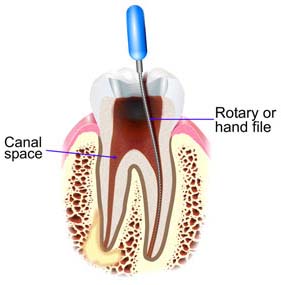The region in the centre of the tooth is referred to as the “root canal.” It houses the tooth nerve as well as a soft area known as the pulp chamber. A root canal treatment is performed to prevent a decaying or infected tooth from becoming abscessed and injuring the surrounding tissue. The procedure entails removing the diseased pulp and thoroughly cleaning the tooth before re-sealing it.

Why is it necessary to extract the nerve and pulp of a tooth?
When the nerve and pulp of a tooth begin to deteriorate, germs accumulate in the pulp chamber. If the bacterium is allowed to fester, it will combine with the already-decayed detritus in the chamber, resulting in an abscess. An abscess is a pus-filled cavity that forms near the tooth’s root. Other risks associated with neglecting decayed teeth include:
-Swelling that will progress to the neck and face over time.
-Jaw bone loss is a common occurrence.
-A gap between the gums and the side of the teeth. The hole could possibly break through the skin and open through the cheek.
Is it risky to take them out?
The nerve is usually only essential during the period when the tooth is growing out of the gums. After then, it only serves to assist the tooth in determining if something is cold or hot. As a result, removing it to stop decay from spreading is not harmful to the tooth. In fact, it has very little effect on the tooth’s daily functions.
You may have an infected tooth if you detect discomfort in your teeth when they come into contact with food (or anything); or if your teeth are particularly sensitive to cold/hot items with pain that persists even after the object is removed. Contact a dentist right away to find out what your options are.

